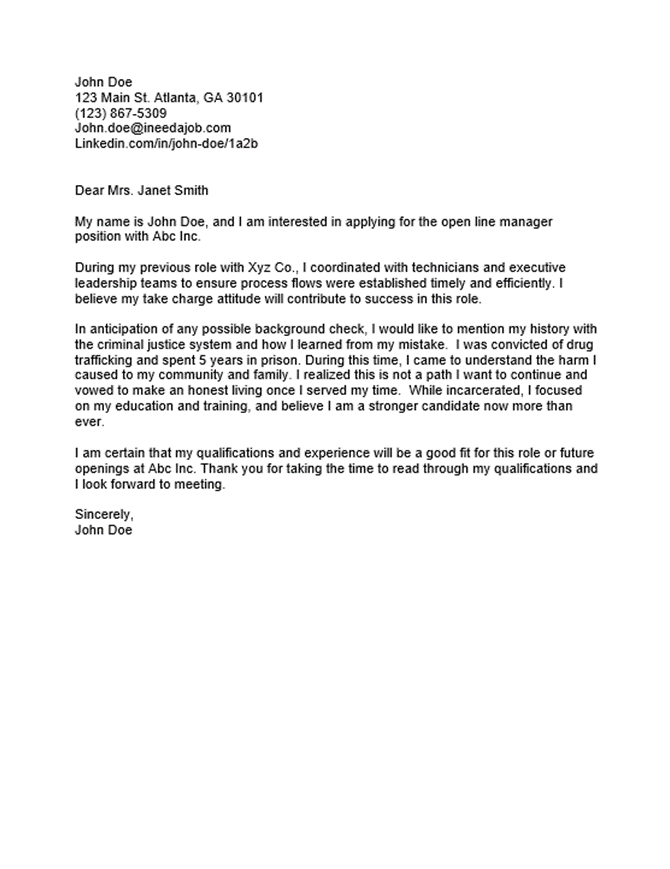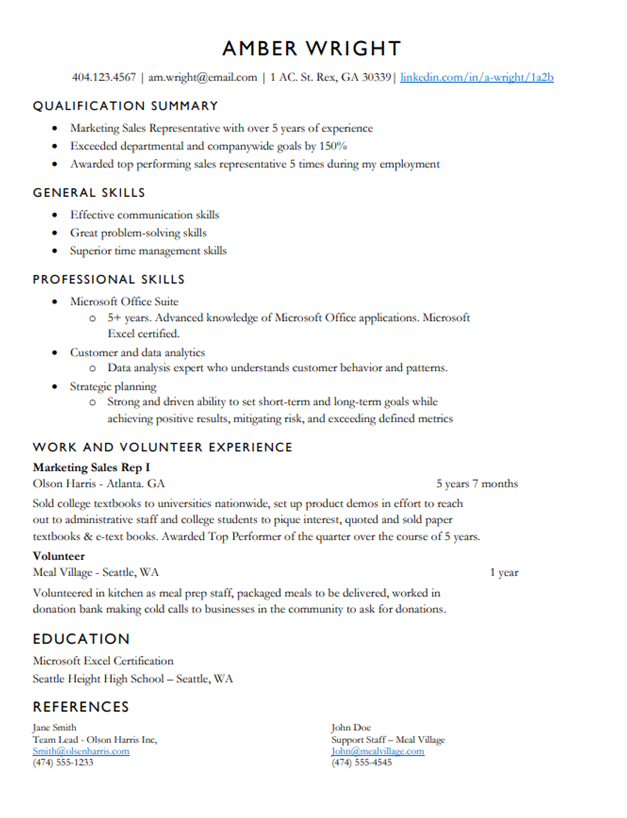Obtaining employment is important when it comes to a successful reentry and will help you become financially stable, self-sufficient, and have a sense of belonging amongst your community. This Reentry Employment Guide includes job training and job search resources; tips for cover letters, resumes, and job interviews; employer benefits of hiring justice-impacted individuals; entrepreneurship details; and record clearing resources.

Job Training Resources
(Employment Articles)
(List of reentry programs and assistance)
(List of reentry programs and assistance)
(Employment Services, Job Training)
(Employment Resources)
(Employment Services, Job Training)
(212) 558-5300
(Reentry Services)
1-800-SAL-ARMY
(Support Services)
(Employment Services)
Brings together jobseekers, businesses, and training providers to facilitate apprenticeship opportunities.
Guide to starting a trade career
All states and territories have multiple organizational resources that can help returning citizens find employment post-incarceration. Our Reentry Resources page has state-specific pages for all 50 states and 5 major territories containing local resources for finding jobs, training, and apprenticeships.
Job Search Resources
(Temp agencies that hire people with felony convictions)
(Employment Services, Job Training)
(Employment Services)
(Employment Services)
(Employment Services, Job Training)
(212) 558-5300
(Employment Services)
(844) 775-8326
(Support Services)
All states and territories have multiple organizational resources that can help returning citizens find employment post-incarceration. Our Reentry Resources page has state-specific pages for all 50 states and 5 major territories containing local resources for finding jobs, training, and apprenticeships.
Online profiles: Consider creating online profiles and uploading your resume to:
Online profiles: Consider creating online profiles and uploading your resume to:
Cover Letter
A cover letter offers an opportunity for justice-impacted individuals to explain employment gaps. It can highlight your skills, as well as the progress you made during your incarceration. This will show prospective employers that you are more than your criminal history.
How to Write a Cover Letter
Contact information
- Include your name, phone number, and email address.
- Some employers may consider your residential address when determining your eligibility. Feel free to include or omit it depending on your personal preference.
- Include your LinkedIn profile if you have one.
Greeting
- Include a formal greeting and address the cover letter directly to the hiring manager by including their name if possible.
- This can show that you took the time to research the company and or position you are applying for.
Introduction
- Introduce yourself by name and mention the position for which you are applying.
Body paragraph
- Describe how you will be a great fit for the role and list your positive skillset.
- Highlight your qualifications.
- Provide examples of the skills that you have and how they fit the position to which you are applying.
- List any achievements.
Mention your criminal background
- Explain, but do not offer excuses or shift blame.
- If you are not comfortable explaining this here, offer to explain your gap in employment during your potential interview.
Restate your interest
- Express your interest in the job.
- Thank the person for their time.
Closing
- Use a polite closing.
- Example: Sincerely, Kind regards, Thank you
- Sign/type your name.
Resume
A resume is a document used by an individual to show their background and work experience. This document typically includes accomplishments, skills, relevant job experience, and education.
How to Write a Functional Resume
For justice-impacted individuals, a functional resume may be the best format because it highlights skills more than work experience, taking attention away from gaps in your employment history.
Contact Information
- Include your name, phone number, and email address.
- Some employers may consider your residential address when determining your eligibility. Feel free to include or omit it depending on your personal preference.
- Include your LinkedIn profile if you have one.
Qualification Summary

- This section is meant to emphasize your most notable accomplishments in order to help your potential employer decide if you are the best fit for the position.
- List important skills and accomplishments relating to the position for which you are applying.
- This section can be formatted using bullet points or a few concise sentences.
- Overall, this section should be treated as the introduction to your resume.
- Avoid listing general accomplishments.
- Be as specific as possible. Every qualification summary should be written to effectively emphasize the reasons why you are the one for the job.
General Skills
- Separate from your professional skills, this is your moment to list the general skills that you believe best describe yourself.
- Examples include communication skills, strong work ethic, responsibility, etc.
Professional skills
- Cater your resume to each job application.
- The functional resume style emphasizes your individual skills, therefore each time you apply to a job it is important to list your most important skills that relate to the position.
- Be specific and precise.
- Be sure to emphasize your efficiency in each skill and show employers that you are an excellent candidate for this position.
- Include skills even if they were acquired during incarceration.
- If your skills or accomplishments earned during incarceration can be useful to your future job, be sure to include them. Wording is important here, though. Listing a past employer as “State of Maine” looks better than “Maine State Prison.”
Work and Volunteer Experience
- If your work history is scarce, you can include volunteer work.
- Employment gaps due to incarceration may result in a lack of experience on your resume. Including volunteer work can show employers additional experience.
- Describe each of your previous positions in detail.
- Include information such as the company, your position, daily responsibilities, and length of employment.
Education
- List your highest level of education first.
- If your education section lacks information, consider including relevant coursework, academic awards, and extracurricular activities.
- If you are concerned about age discrimination or a considerable gap between your education and the job application, you do not have to include the years of attendance for your educational experiences.
References
- If able, it is beneficial to include references on your resume.
- References can help employers see past your criminal history and help them determine what type of employee you are.
- Use professional references only. Refrain from including friends and family.
- Use references who are aware of your criminal history and are still willing to endorse you.
Interview Tips
Interviews are important both to you and the prospective employer. The purpose of an interview is to decide if you are a qualified, motivated, and suitable candidate for the job in question. It is also an opportunity for you to gauge whether or not this employment environment is a good fit for you.
Tip 1 – Prepare a resume
Employers will want to see a prepared resume, regardless of the industry or type of position for which you are applying. It is important to have your resume on hand for the interview and is wise to bring several copies. Make sure to know your resume very well.
Tip 2 – Research the employer
Before your interview, research the potential employer to better understand the company’s mission and core values, and where the open position fits into the larger organization. This will also better prepare you to answer any questions the interviewer may ask you.

Tip 3 – Practice your interview
Practicing a mock interview with a friend or family member (or even alone in front of a mirror) can have huge benefits for your interview. This will help you project calm and confidence and help you to practice answering some common questions that are given in an interview. Some organizations, such as certain regional Goodwill centers, offer practice interviews.
Tip 4 – STAR interview method
The STAR method is a technique used to help guide you when responding to behavioral questions that ask about how you reacted to certain situations at past jobs. Example: “Tell me about a challenge you faced and how you handled it” or “Give an example of a time you stepped up and led your team.” This method will help give you real-life responses that are concise and can help the employer determine if you are a good fit for the position.
- Situation – Explain to the interviewer a specific situation. Give context to your story by sharing a few details surrounding the situation. Be sure not to spend a lot of time on this part because the interviewer will likely be more interested in the actions taken by you.
- Task – Describe what your role in the situation was. Discuss one or two points that best describe the task that needed to be handled. Spend minimal time on this component as well.
- Action – Describe the specific actions taken to address the situation. Discuss what steps were taken to find a solution. Be sure to highlight what you contributed even if it was a team effort. This section is where you will go the most in-depth in your response as it is what interviewers will be looking most closely at to determine if you are a good fit for the role.
- Result – Explain the result you reached through your actions. Focus on a few main points of your outcome and discuss how it impacted you. What did you learn? How can you grow from this experience? How has it made you a better employee?
Tip 5 – Be aware of nonverbal communication
Body language can speak volumes about a person. Greet the interviewer with a firm handshake and a smile. Maintain eye contact and good posture.
Tip 6 – Dress professionally
Plan what you will wear to the interview. Be sure what you choose is appropriate for the job. A simple business casual look will suffice for most positions. Example: button down shirt with slacks and dress shoes, blouse with slacks/knee-length skirt and dress shoes, etc.
Tip 7 – Address your criminal history with honesty
When addressing your involvement with the criminal justice system, keep it short and do not go into great detail. This is an opportunity to explain, but not excuse. Be sure not to place blame on anyone else, but rather focus on how you have grown in a positive way since incarceration and what you have learned from the experience. Even if the interviewer does not mention your criminal history, it is best to be upfront about it, as omitting this information could be seen as dishonesty if later discovered through a background check. Even if you have already mentioned this in your cover letter, it is best to address the topic during your interview. Typically, the middle of the interview is the best time to bring this up.

Tip 8 – Explain employer benefits for hiring a returning citizen
See section below.
Tip 9 – Next steps after the interview
Within a few days after the interview, it is important to follow up with the employer either by email or letter. Thank the interviewer for their time, explain that you enjoyed learning more about the position and that you are still interested.
Employer Benefits for Employing Returning Citizens
Given the adversity that many justice-impacted people face when seeking employment post-incarceration, it is important to be aware of the benefits that employers can receive by employing you.
Federal Bonding Program
Offers bonds ranging from $5,000 to $25,000 to employers as insurance in case the employee causes any damages to the company in the first six months of their employment.
Work Opportunity Tax Credit
A benefit employers can receive for employing returning citizens within one year of their release from prison. The credit amounts to 40% of the employee’s first year’s wages up to $6,000.
Entrepreneurship
Finding employment post-incarceration is one of the biggest obstacles to reentry that justice-impacted individuals face. One possible solution to this is to become your own employer.
How to Start a Limited Liability Company (LLC)
- Choose a name for your LLC.
- Designate a Registered Agent for the LLC.
- Create and File Articles of Organization with the state.
- Create and sign an Operating Agreement for the LLC.
- Obtain an Employee Identification Number from the state.
- Set up a bank account to be used for the LLC.
Some resources for starting your own business:
How to Fund Your Business
Receiving funding for your company can be more difficult if you have a criminal record, however there are still many opportunities to receive loans and grants:
Allows you to search for federal grant opportunities that may be available for business owners with criminal records. State-level grant opportunities may be available as well.
Inmates to Entrepreneurs has a list of funding opportunities.
Small Business Administration (SBA) loans are available to business owners with criminal records.
Raise money by using a crowdfunding platform.
While the vast majority of industries are open to those who are formerly incarcerated, there are a few areas of practice that you may not be eligible to pursue, depending on federal, state, or local laws and individual supervision restrictions. Familiarize yourself with these rules while exploring the possibility of entrepreneurship.
Clear Your Criminal Record
Clearing your criminal record, if eligible, presents many benefits such as increasing your chances of:
- Gaining employment
- Obtaining some business and occupational licenses
- Receiving business loans
Visit our How to Clear Your Criminal Record guide for more information:

